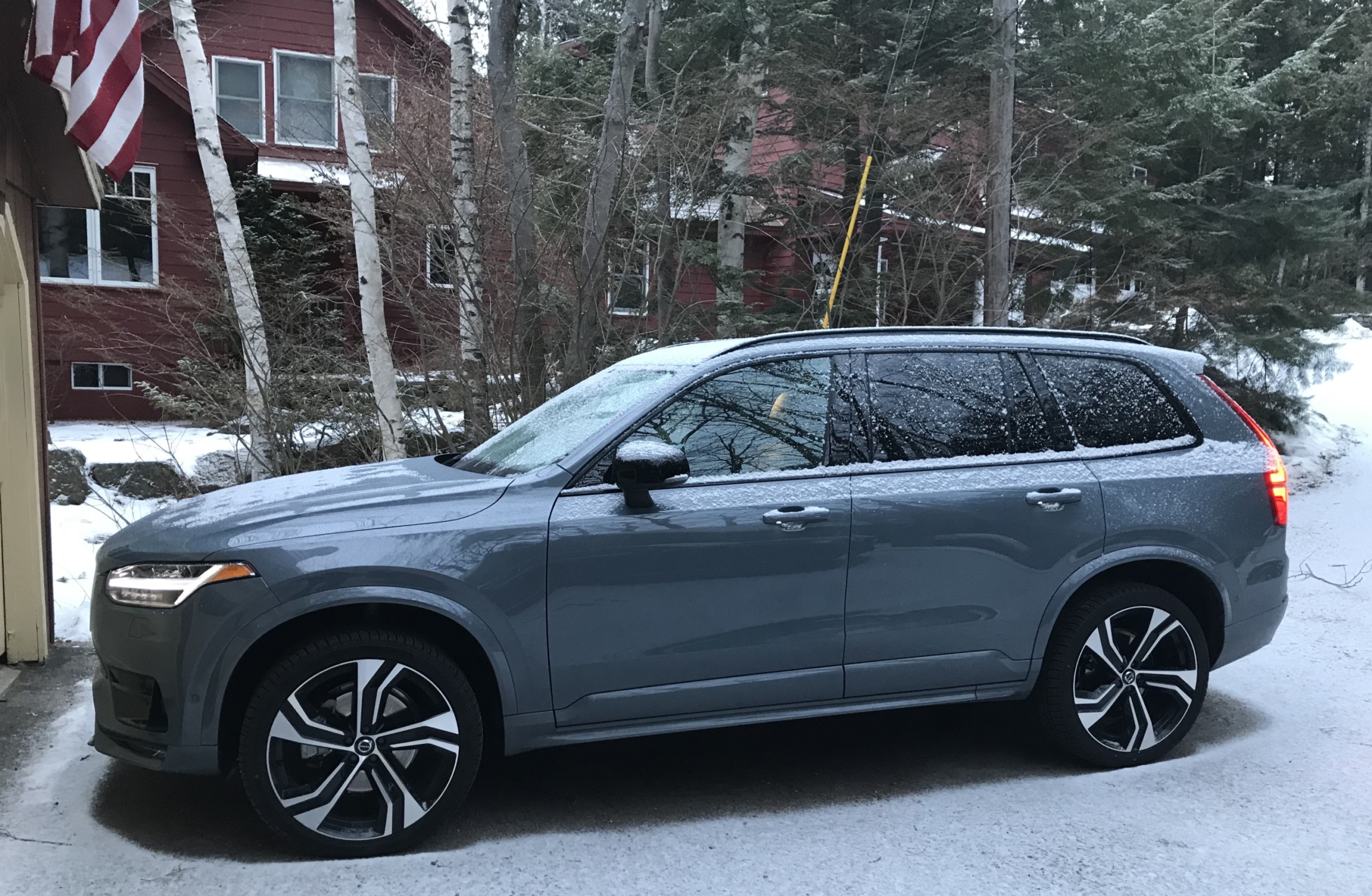The Volvo XC90 has been around for a few years now. Pictured here is a T6 version with some Polestar mods. It looks great, the interior is great, and the engine is slightly noisy but overall pretty great. But this particular one does have a big problem. Actually, it has four too-big problems.

Specifically, those gorgeous 22-inch wheels are its problems. More specifically, it is the tires that have basically no sidewall, that are wrapped around those wheels. While looking great, these big wheels yield a rough ride, as the shorter tire sidewalls tend to absorb fewer road imperfections.
With these tires, road bumps, potholes, and pebbles get transmitted directly into the suspension. Even the optional air suspension on this rig, it cannot absorb them properly. It has also been proven that low-profile tires do not necessarily enhance handling performance. This is certainly true for a seven-passenger 4500-pound three-row SUV.

The pictured tires however, are not conventional tires. These are Pirelli Scorpion Winter tires, sized 285/35-22. By design, the sidewalls on winter tires tend to be slightly softer than all-season in order to remain soft in colder temperatures. But that still wasn’t enough to smooth out the ride. Another downside is that winter is pothole season. The lack of those sidewalls increases the chances of a flat tire or a bent wheel.
Finally, there is the high cost of these Pirelli winter tires. At $382.80 each, they cost more per set of four than I’ve paid for some cars. That does not include the second set of 22-inch wheels that they need to be mounted on. And of course there is mounting and balancing.

Switching to smaller diameter wheels for winter use, as pictured above, makes a lot of sense. First, the added rubber around the wheel provides a better ride. The smaller wheels are more resilient to bending on the awful winter roads. That leads to a lower potential of a flat tire. Finally, the smaller diameter wheel typically requires a narrower tire. A narrower tire will put the weight of the vehicle onto a smaller footprint. That pressure makes it easier for tires to push down through the snow for better traction.
It goes without saying that smaller diameter wheels and tires are also less expensive. But the look of the vehicle does suffer. Handling on dry roads will also be effected but pushing your big SUV to 11/10ths on a freeway ramp is not a good thing to do in January or July.

Great vehicle, this XC90. Frankly, I really like all the new Volvos. They all look great, drive well, are comfy, have good power but are still fuel efficient. Their gorgeous interiors finish off the package. But unless you live in a place where cold weather does not exist and roads are as smooth as a polished marble countertop, do yourself a favor and don’t go full-pimp with the dub-plus-two rimmies.


Leave a Reply